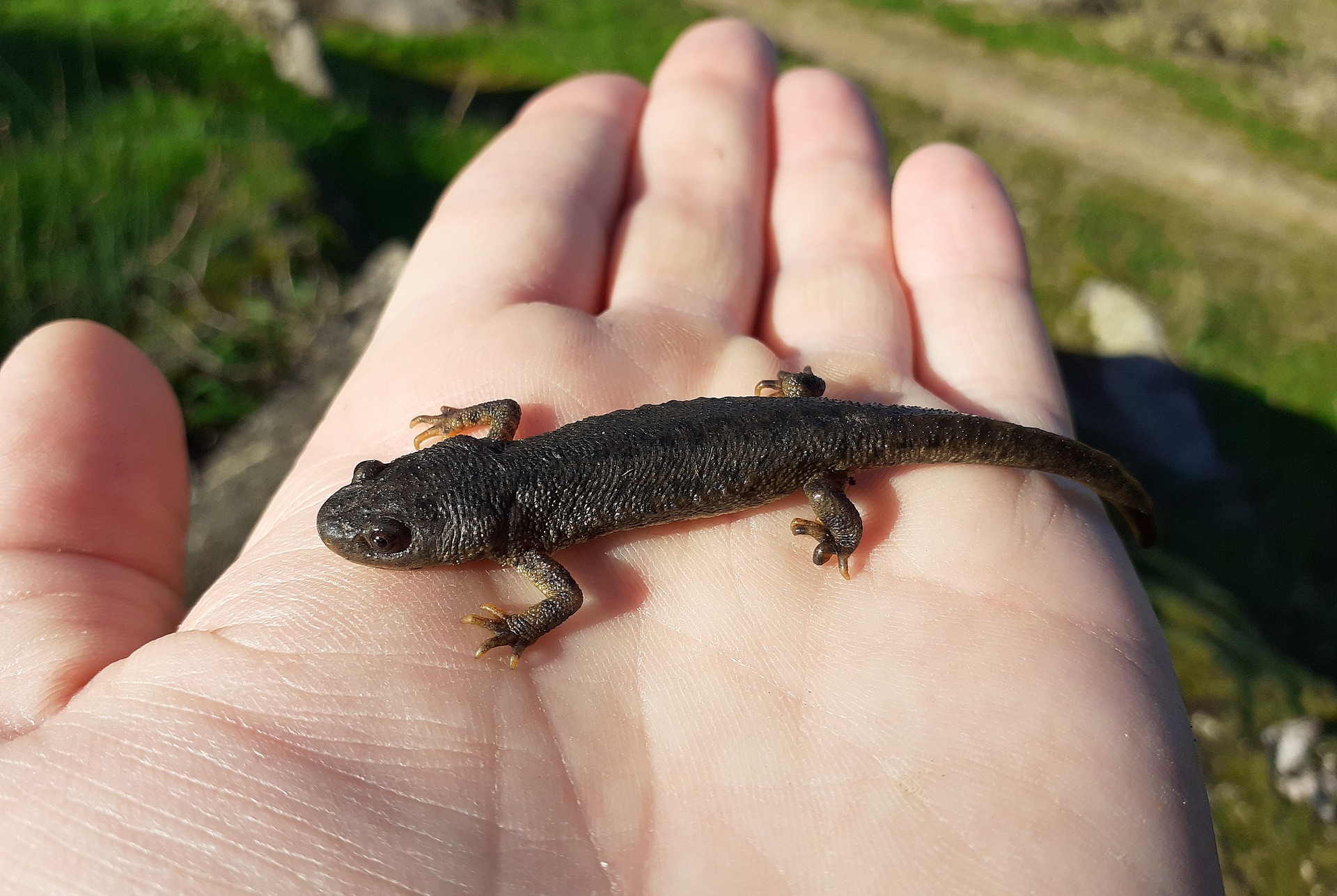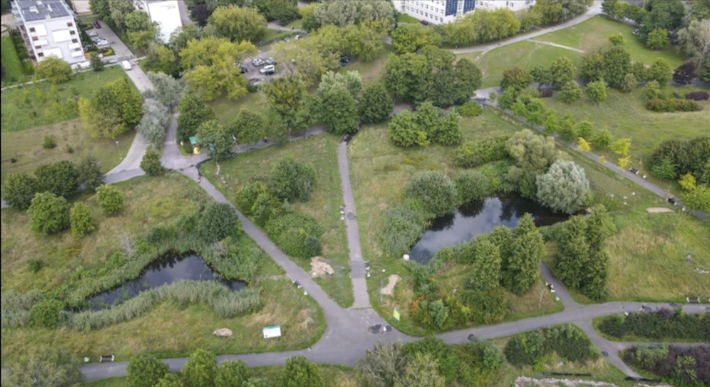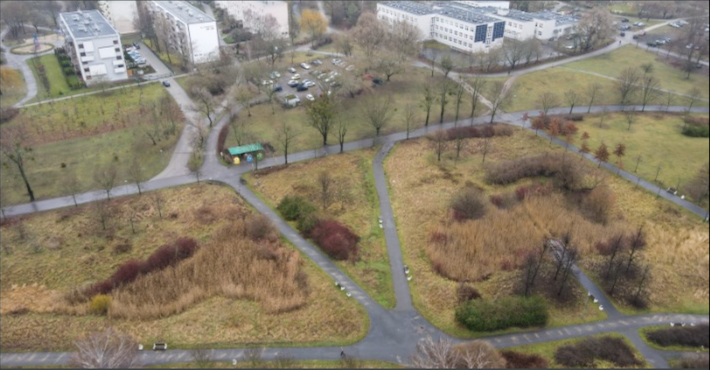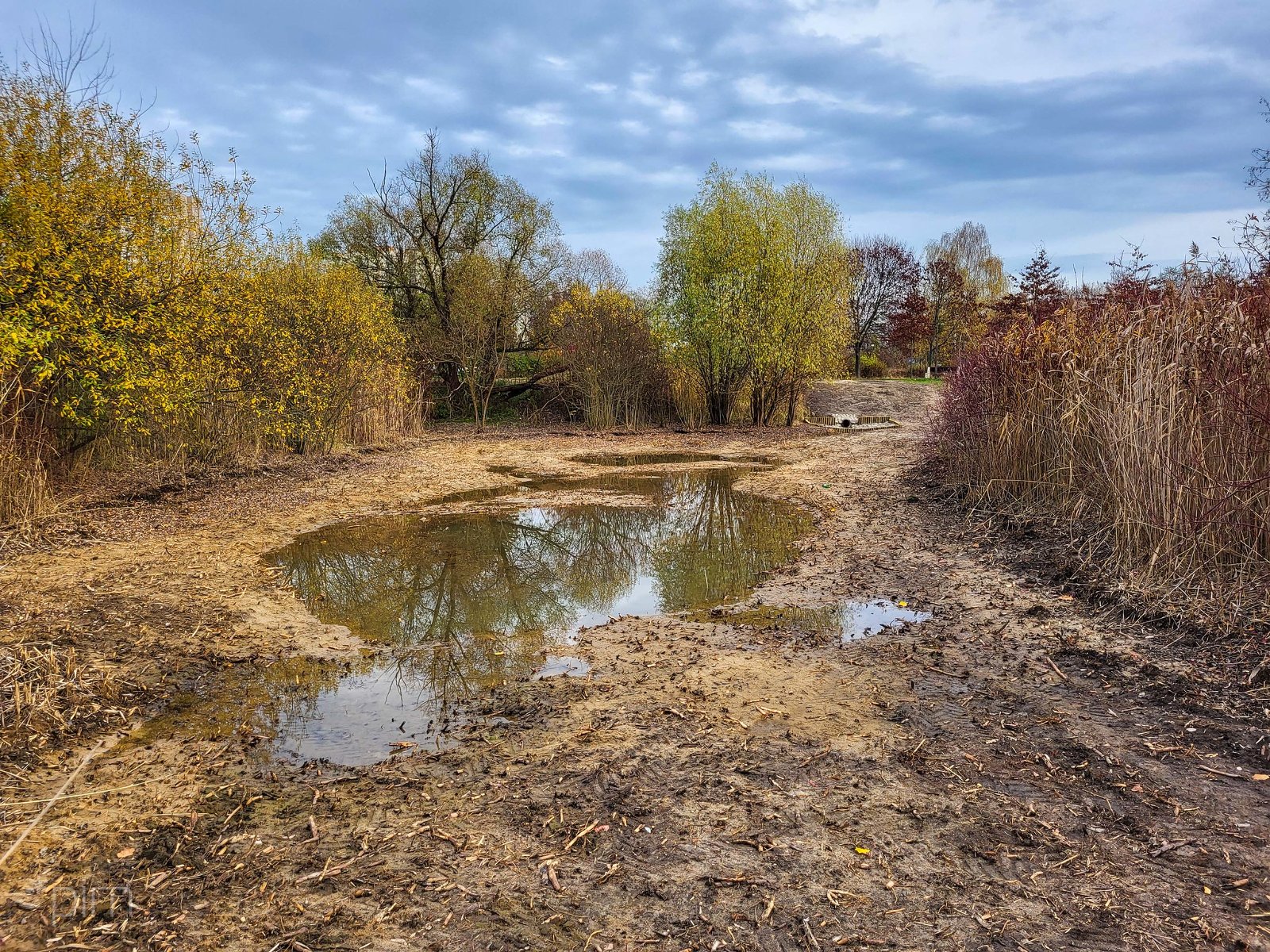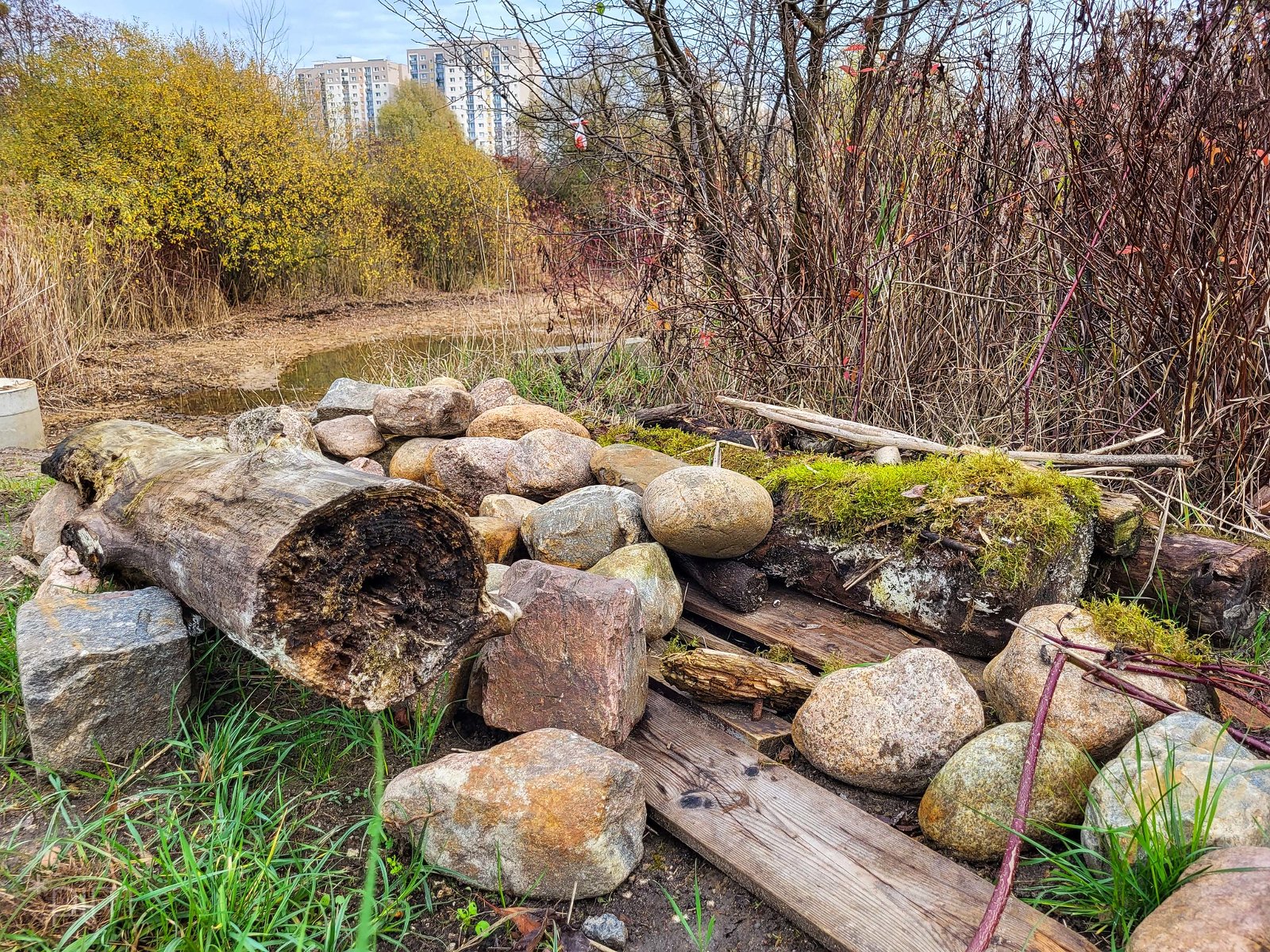Rainwater from the roof of the school flows via a gravity pipeline to one of the ponds in the ecological use area. This, in turn, is connected to the other pond by a corresponding flow pipe. As a result, the disappearing ponds today are again filled to the brim with water despite the hot and dry summer. What is more, the site is unique in that it is the habitat of newts. Hence the name of this ecological use: Ratajskie newts. We wrote about plans to build a system to feed the ponds a year ago. Construction work is now complete and rainwater is flowing steadily into the ponds in Poznań’s Rataje.
The Ratajski Newts ecological site is located between the Tysiąclecia and Lecha estates. It was established in 2011. Wise management of rainwater is crucial, especially in times of current climate change. The investment in Ratajy, although not spectacular, is of great importance for the protection of the local ecosystem. That is why it was carried out in close cooperation with specialists from the University of Life Sciences,” says Jacek Jaśkowiak, Mayor of Poznań
As part of the task, a section of the rainwater drainage system was created, completely cutting off the inflow of rainwater from other (contaminated) sealed surfaces, such as pavements, car parks and streets. Wells and existing roof gutters from the school building on the Tysiąclecia housing estate were connected to the sewer
The rainwater collected in this way flows via a gravity pipeline to one of the ponds in the ecological use area. This, in turn, is connected to a second pond by an appropriate flow pipe. A retention pond has also been built to provide periodic retention and to regulate the maximum flow of water into the pond, so that in times of drought it adequately feeds the newt areas
Within the outflow ditch, at the outlet of the second pond, a slowing sill was constructed to regulate the outflow of water from both ponds. All work on the ponds was carried out in consultation with and under the close supervision of a herpetologist from the University of Life Sciences
The difference in water level is shown below. The ‘before’ photo is from last autumn, while the ‘after’ photo was taken this summer. The photos are not intended to show the difference in greenness of the area, which is due to the different seasons. The aim is to show the water levels in both ponds
The installation on the school grounds was done first, the contractor using the holiday time for the work so as not to disturb the students in class. The work around the ponds, including cleaning and de-sludging, was carried out in October to protect the newts, which leave the ponds at this time to migrate to their wintering grounds
The Ratajski newt ecological site was created to protect the population of such amphibians as the newt, grass frog, grey toad, green toad, water frog and sandpiper. It has an area of over 5 hectares. Since its creation, the grassland has been under the constant observation of naturalists, who are consulted on the greenery management measures carried out by the Urban Greenery Board, which include mowing the grasses
All these measures will provide suitable living and mating conditions for newts, a species of amphibians under legal protection that occur in the area. In addition, the management of rainwater from the school grounds is one of the investments to help adapt to climate change in the city. The project has been subsidised by the National Fund for Environmental Protection and Water Management
“Taking care of adequate retention in the city is a very important issue, especially in the face of considerable climate change. Here, the example of our ‘Ratai newts’ investment, where rainwater from the school roof feeds two new ponds.” – adds the Mayor of Poznań
source: Poznan City Investments
Read also: Curiosities | Ecology | Greenery | City | Poznan | whiteMAD on Instagram


